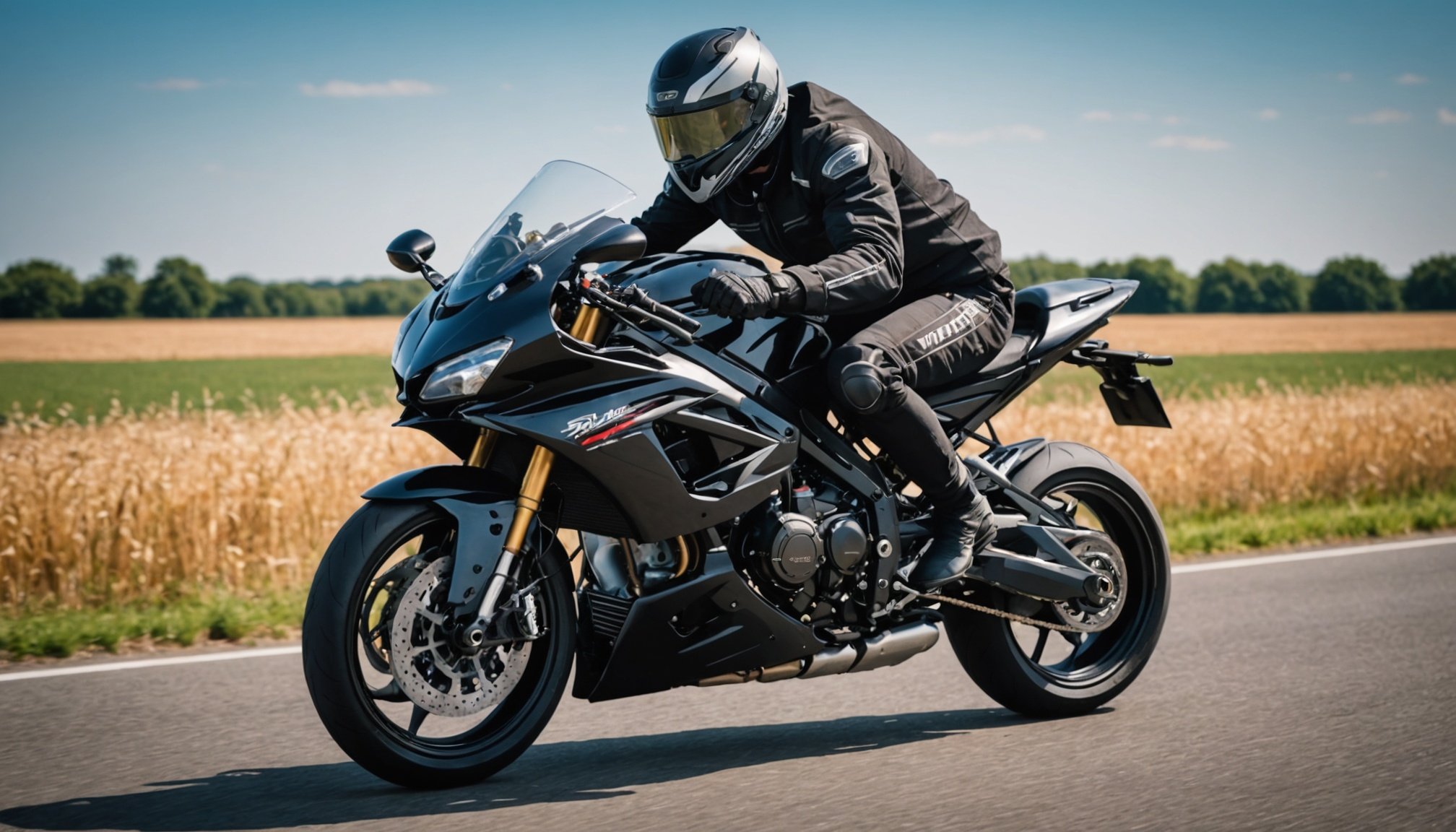Top Reasons for Sport Bike Overheating in the UK and Essential Prevention Tips
Understanding the Risks of Overheating
When it comes to riding a sport bike, especially in the UK’s varied and often unpredictable weather, understanding and preventing overheating is crucial for both the bike’s performance and the rider’s safety. Overheating can lead to a range of issues, from minor inconveniences to major breakdowns, and even pose a risk to the rider.
Engine Overheating: The Primary Concern
The engine is the heart of your motorcycle, and it generates a significant amount of heat during operation. Engine overheating can be caused by several factors, including:
Also read : How can I create a balanced training plan for cycling during the UK cycling season?
-
Insufficient Coolant: The coolant system is designed to regulate the engine’s temperature. If the coolant level is low or the coolant itself is of poor quality, it can’t do its job effectively. “Make sure to check the coolant level regularly and use a high-quality coolant specifically designed for motorcycles,” advises a mechanic from a local bike shop.
-
Clogged Radiator: A clogged radiator can prevent the coolant from flowing properly, leading to increased engine temperatures. Regularly inspect and clean the radiator to ensure it’s functioning correctly.
This might interest you : Essential Guide to Winterizing Your Sport Bike in the UK: Key Steps to Safeguard Your Engine from Damage
-
Faulty Thermostat: The thermostat regulates the engine’s operating temperature. If it’s faulty, it can cause the engine to overheat. Look out for warning signs such as the temperature gauge rising unusually high or the engine coolant light coming on.
Common Causes of Overheating in Sport Bikes
High Ambient Temperatures
Riding in hot weather can exacerbate the risk of overheating. Here are some tips to help you manage:
- Avoid Riding During Peak Heat: If possible, try to avoid riding during the hottest part of the day. Early morning or late evening rides can be cooler and less stressful on the engine.
- Use High-Quality Engine Oil: High-quality engine oil can help the engine run more efficiently and generate less heat. Regular oil changes are essential to maintain the health of your motorcycle engine.
- Check Coolant Regularly: Before heading out on a ride, especially in hot weather, make sure to check the coolant level and ensure it’s at the recommended level.
Poor Maintenance
Regular maintenance is key to preventing overheating issues.
-
Oil Change: Regular oil changes are crucial. Old oil can become less effective at lubricating the engine, leading to increased friction and heat.
“`plaintext -
Check the oil level before every ride.
-
Change the oil every 2,500 to 5,000 miles depending on the manufacturer’s recommendations.
-
Use a drain bolt to drain the old oil and replace it with new, high-quality oil.
“` -
Coolant System Check: The coolant system needs regular checks to ensure it’s functioning properly.
“`plaintext -
Check the coolant level and top it off if necessary.
-
Inspect the radiator for any signs of leaks or blockages.
-
Replace the coolant every 2 to 3 years or as recommended by the manufacturer.
“`
Riding Conditions
The way you ride and the conditions you ride in can also impact the engine’s temperature.
- Avoid Aggressive Riding: Aggressive riding, such as rapid acceleration and braking, can put additional stress on the engine, causing it to generate more heat.
- Use Proper Tyre Pressure: Proper tyre pressure can improve the bike’s performance and reduce the load on the engine. Check the tyre pressure regularly and adjust it according to the manufacturer’s recommendations.
Preventing Overheating: Practical Tips
Regular Servicing
Regular servicing is essential to prevent overheating and other mechanical issues.
- Schedule Regular Checks: Make sure to schedule regular checks with a professional mechanic. They can identify potential issues before they become major problems.
- Replace Parts When Necessary: Replace parts such as the thermostat, radiator, and coolant hoses when they show signs of wear or damage.
Monitoring Temperature
Keeping an eye on the engine’s temperature is crucial.
- Use a Temperature Gauge: Ensure your bike is equipped with a temperature gauge. This will help you monitor the engine’s temperature in real-time.
- Watch for Warning Signs: Be aware of warning signs such as the temperature gauge rising unusually high, the engine coolant light coming on, or unusual noises from the engine.
Special Considerations for Electric Bikes and Scooters
While the focus has been on traditional sport bikes, electric bikes and scooters also have unique overheating risks, particularly related to their lithium-ion batteries.
Battery Maintenance
- Avoid Overcharging: Never leave your e-bike or scooter charging unattended or while sleeping. Overcharging can cause the battery to overheat and potentially catch fire.
- Use Correct Chargers: Always use the charger provided by the manufacturer or one that is specifically designed for your e-bike or scooter’s make and model.
- Check for Signs of Battery Failure: Look out for signs such as excessive heat, unusual odors, swelling, or leaks. If you notice any of these, stop using the battery immediately and consult a professional.
Safe Charging Practices
- Charge in Safe Locations: Charge your e-bike or scooter in a well-ventilated area, away from flammable materials. Avoid charging in hallways or other escape routes.
- Use Smoke Alarms: Ensure that the area where you charge your e-bike or scooter is equipped with smoke alarms.
Table: Comparison of Overheating Prevention Measures for Traditional and Electric Bikes
| Prevention Measure | Traditional Sport Bikes | Electric Bikes and Scooters |
|---|---|---|
| Coolant Check | Regularly check coolant level and quality | N/A |
| Oil Change | Regular oil changes every 2,500 to 5,000 miles | N/A |
| Radiator Inspection | Inspect radiator for leaks or blockages | N/A |
| Battery Maintenance | N/A | Avoid overcharging, use correct chargers |
| Charging Practices | N/A | Charge in well-ventilated areas, avoid hallways |
| Temperature Monitoring | Use temperature gauge, watch for warning signs | Monitor battery health, look for signs of failure |
| Regular Servicing | Schedule regular checks with a mechanic | Schedule regular checks with a professional |
Overheating is a serious issue that can affect both traditional sport bikes and electric bikes and scooters. By understanding the common causes and taking preventive measures, you can ensure your bike runs smoothly and safely.
Final Tips
- Stay Informed: Keep up-to-date with the latest safety guidelines and maintenance tips from reputable sources.
- Be Proactive: Regularly check your bike’s systems and address any issues promptly.
- Ride Safely: Always ride defensively and be aware of your surroundings to avoid additional stress on your bike.
By following these tips and staying vigilant, you can enjoy your rides without the worry of overheating and ensure your motorcycle remains in top condition for years to come.











